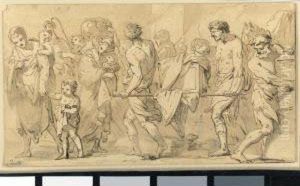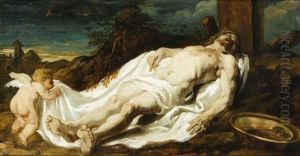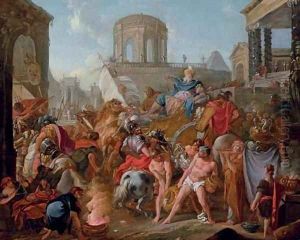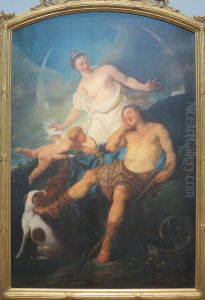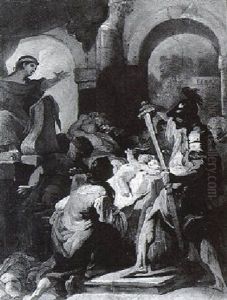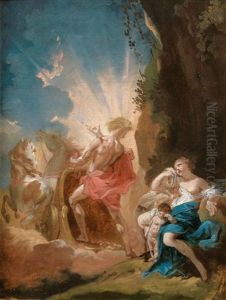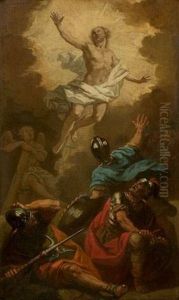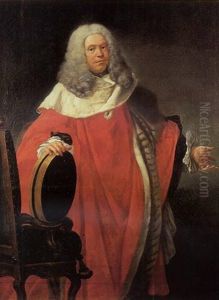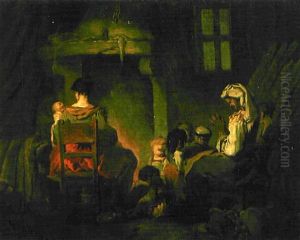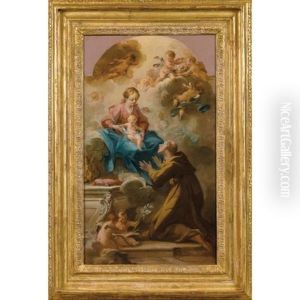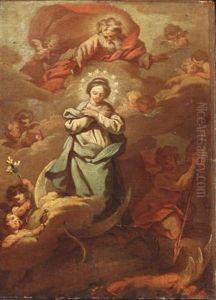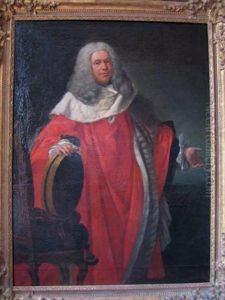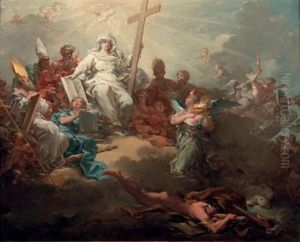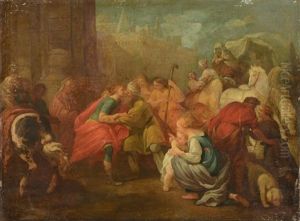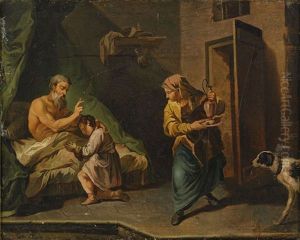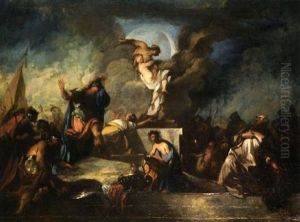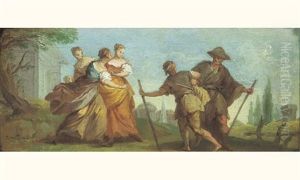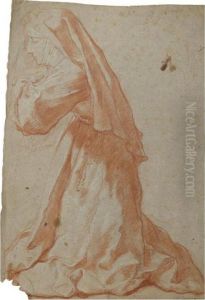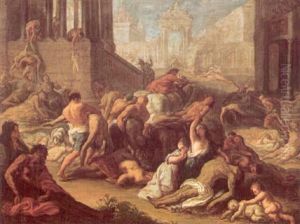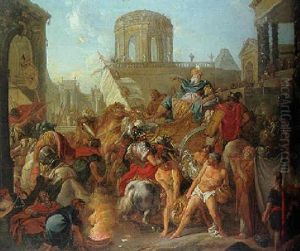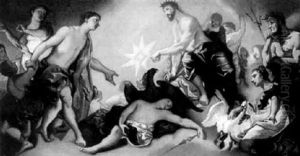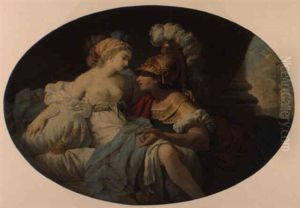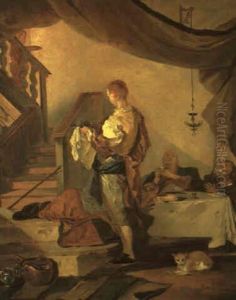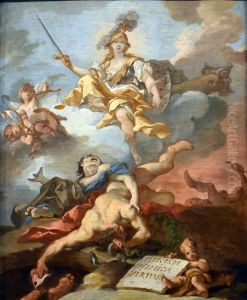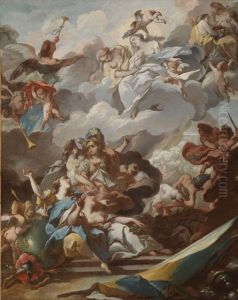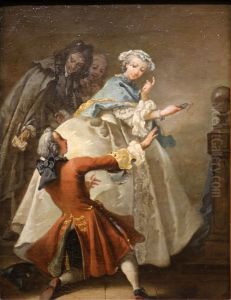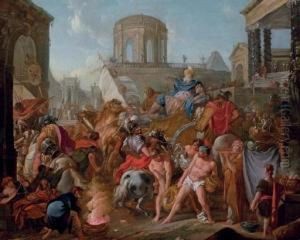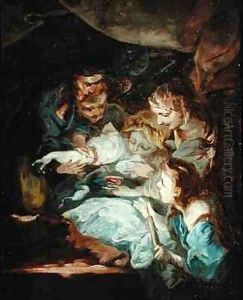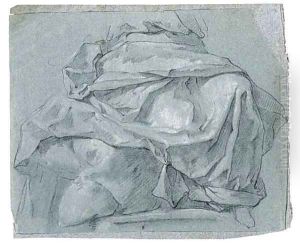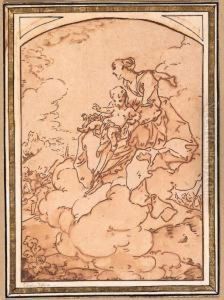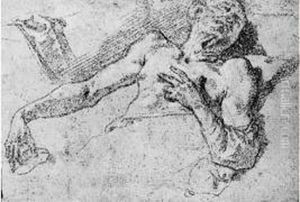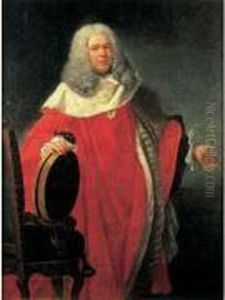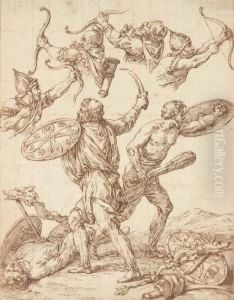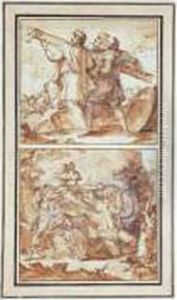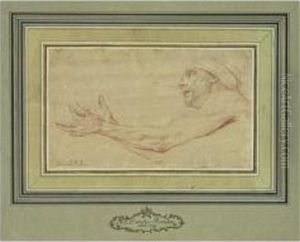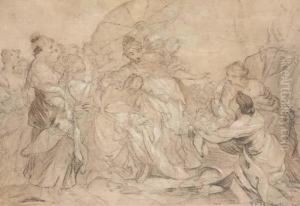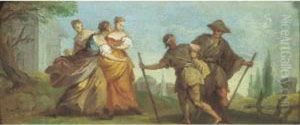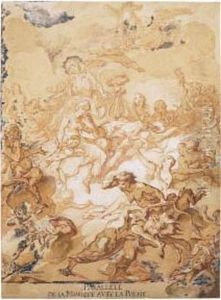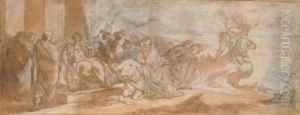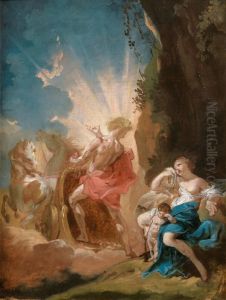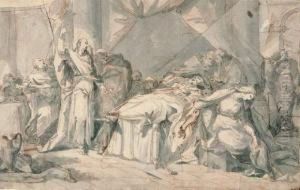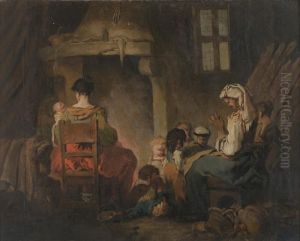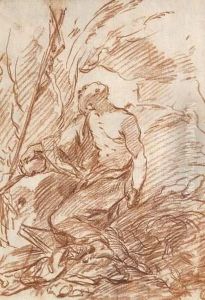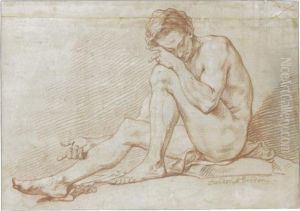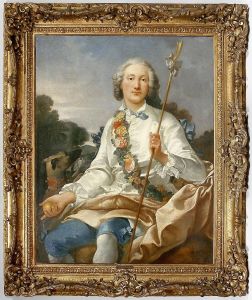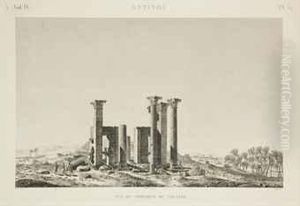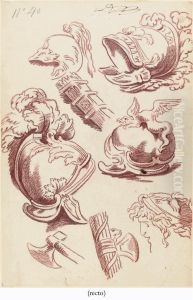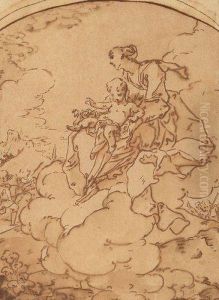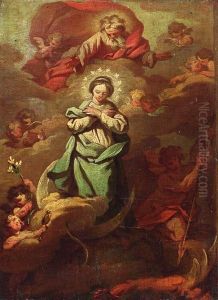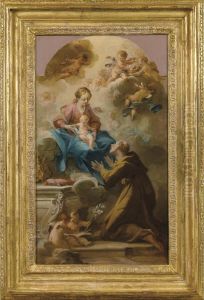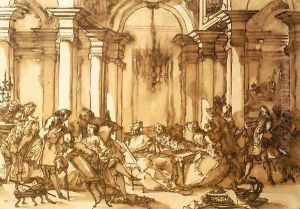Michel-Francois Dandre-Bardon Paintings
Michel-François Dandré-Bardon was a French history painter, illustrator, and writer on artistic theory and the fine arts. Born on April 18, 1700, in Aix-en-Provence, France, Dandré-Bardon demonstrated considerable artistic talent from a young age. He initially studied under a local painter before moving to Paris to further his training. There, he became a pupil of Jean-François de Troy, a leading French painter of the time who was known for his history paintings and decorative schemes.
Throughout his career, Dandré-Bardon was deeply involved in the intellectual and artistic life of Paris. He became a member of the Royal Academy of Painting and Sculpture in 1734 and later became the Academy's professor and rector. His work mainly focused on religious and mythological subjects, reflecting the grand historical style that was favored in academic circles during the 18th century.
In addition to his paintings, Dandré-Bardon was also known for his writings on art. He authored several books, including 'Cours de peinture par principes' and 'Vie des peintres.' These works contributed to the dissemination of academic art theory and provided biographical accounts of artists, which were valuable resources for later generations.
Beyond his contributions to painting and literature, Dandré-Bardon played a significant role in the administration of the arts in France. His involvement with the Royal Academy and his position within the artistic community helped shape the development of French art during the 18th century.
Dandré-Bardon's style was characterized by clarity, harmonious composition, and a focus on the human figure, reflecting the classical influences that dominated the period. Despite not achieving the same level of fame as some of his contemporaries, his work was respected, and his influence was felt in the academic circles of his time.
Michel-François Dandré-Bardon passed away on April 17, 1783, in Paris, just one day shy of his 83rd birthday. His legacy as a painter, writer, and educator has ensured him a respected place in the history of French art.
